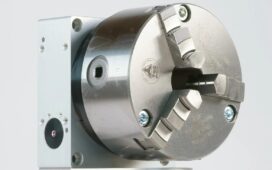The world is currently facing two major challenges: climate change and energy security. Renewable energy sources like wind and solar power can help address these issues, but they face the problem of intermittency. That is, they are not available 24/7, and their output fluctuates depending on weather conditions. This is where renewable energy storage comes in. In this blog, we will discuss the latest innovations in renewable energy storage solutions, including advancements in lithium-ion batteries, flow batteries, hydrogen fuel cells, and other emerging technologies.
Renewable energy storage refers to the process of capturing and storing renewable energy for later use. This is usually done through the use of battery energy storage systems (BESS), which store energy in batteries, and pumped hydro storage, which stores energy in the form of water.
Significance of Renewable Energy Storage
Renewable energy storage is crucial for a sustainable future. It enables renewable energy sources to be used more efficiently, reduces the need for fossil fuels, and improves the reliability of the grid. It also helps to mitigate the effects of climate change by reducing greenhouse gas emissions.
Overview of the Current State of Renewable Energy Storage Solutions
Currently, the most widely used renewable energy storage solution is the lithium-ion battery. These batteries have become more efficient and affordable over the years and are now used in everything from electric vehicles to grid-scale energy storage. Other types of batteries, such as flow batteries and advanced lead-acid batteries, are also being developed for use in renewable energy storage.
Hydrogen fuel cells are another promising technology for renewable energy storage. They convert hydrogen and oxygen into electricity, emitting only water as a by-product. Although they are still relatively expensive, advancements in technology are making them more affordable.
Supercapacitors are another emerging technology for renewable energy storage. They can store and release energy quickly, making them ideal for use in applications such as electric vehicles and portable electronics.
Advancements in Lithium-Ion Batteries
Lithium-ion batteries have seen significant advancements in recent years. They now have higher energy densities, longer lifetimes, and lower costs. This has made them more attractive for use in renewable energy storage applications. Companies like Tesla and LG Chem are leading the way in the development of these batteries, and their use in grid-scale energy storage projects is becoming more common.
Flow Batteries
Flow batteries are another type of battery that is being developed for use in renewable energy storage. They work by storing energy in liquid electrolytes, which flow through a battery cell to generate electricity. Unlike traditional batteries, flow batteries can be scaled up easily, making them ideal for use in grid-scale energy storage projects.
Hydrogen Fuel Cells
Hydrogen fuel cells are being developed for use in renewable energy storage, particularly in applications where long-duration storage is required. For example, they can be used to store energy from wind turbines and solar panels for use during times of high demand. Companies like Plug Power and Bloom Energy are working on developing fuel cell systems for this purpose.
Other Emerging Technologies
According to a report by the World Economic Forum, there are several emerging technologies that are key to improving renewable energy storage capacity. These include thermal energy storage technologies that allow renewable energy to be stored and used later for heating and cooling. Mechanical energy storage harnesses motion or gravity to store electricity. For example, a flywheel is a rotating mechanical device that is used to store energy. Other emerging technologies include hydrogen fuel cells and supercapacitors.
In addition to these emerging technologies, there are also advancements being made in Lithium-Ion Batteries, Flow Batteries, and Advanced Lead-Acid Batteries. Lithium-Ion batteries are currently the most popular type of battery used in electric vehicles and stationary energy storage systems. Flow batteries are another type of battery that can store large amounts of energy for long periods of time. Advanced Lead-Acid batteries are also being developed that can store more energy than traditional lead-acid batteries.
Renewable energy providers like AMP Energy India offer various storage solutions such as Battery Energy Storage Systems (BESS), which can be used for grid stabilization and peak shaving. They also offer Hybrid Energy Storage Systems (HESS), which combine multiple storage technologies such as Lithium-Ion batteries and Flow batteries to provide a more reliable and efficient solution.
Various storage solutions provided by renewable energy providers like AMP Energy India
Renewable energy providers like Amp Energy India are providing various storage solutions to help address the intermittency problem of renewable energy. They are developing innovative energy storage projects using a combination of technologies, including battery energy storage systems, pumped hydro storage, and hydrogen fuel cells Amp Energy India is a renewable energy company based in India that is committed to providing reliable and sustainable energy solutions. They offer various energy storage solutions that include both grid-scale and distributed storage systems. These solutions aim to increase the penetration of renewable energy sources in the Indian energy mix.
Renewable energy storage is critical for a sustainable future, and advancements in technology are making it more efficient and affordable. Lithium-ion batteries, flow batteries, hydrogen fuel cells, supercapacitors, and advanced lead-acid batteries are all promising technologies for renewable energy storage. Companies like AMP Energy India are also developing innovative energy storage solutions to increase the penetration of renewable energy sources in the energy mix. Continued research and investment in renewable energy storage will be crucial for achieving a clean and sustainable energy future.






